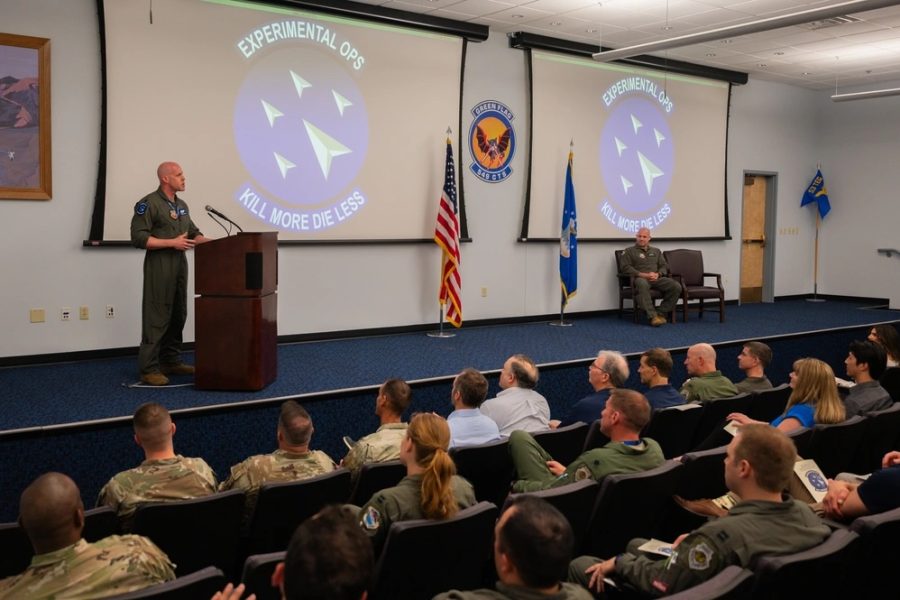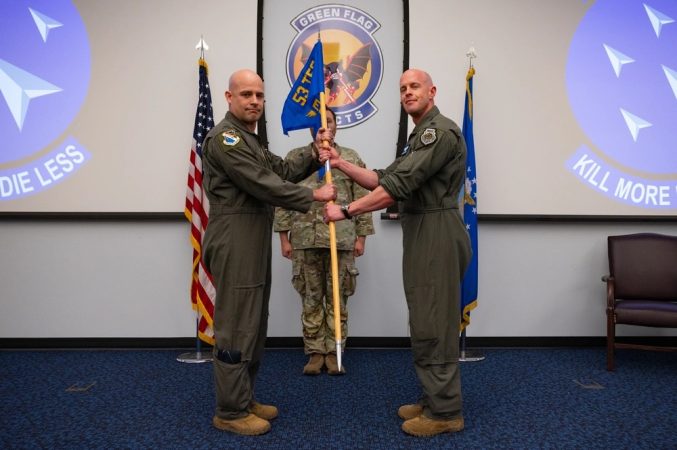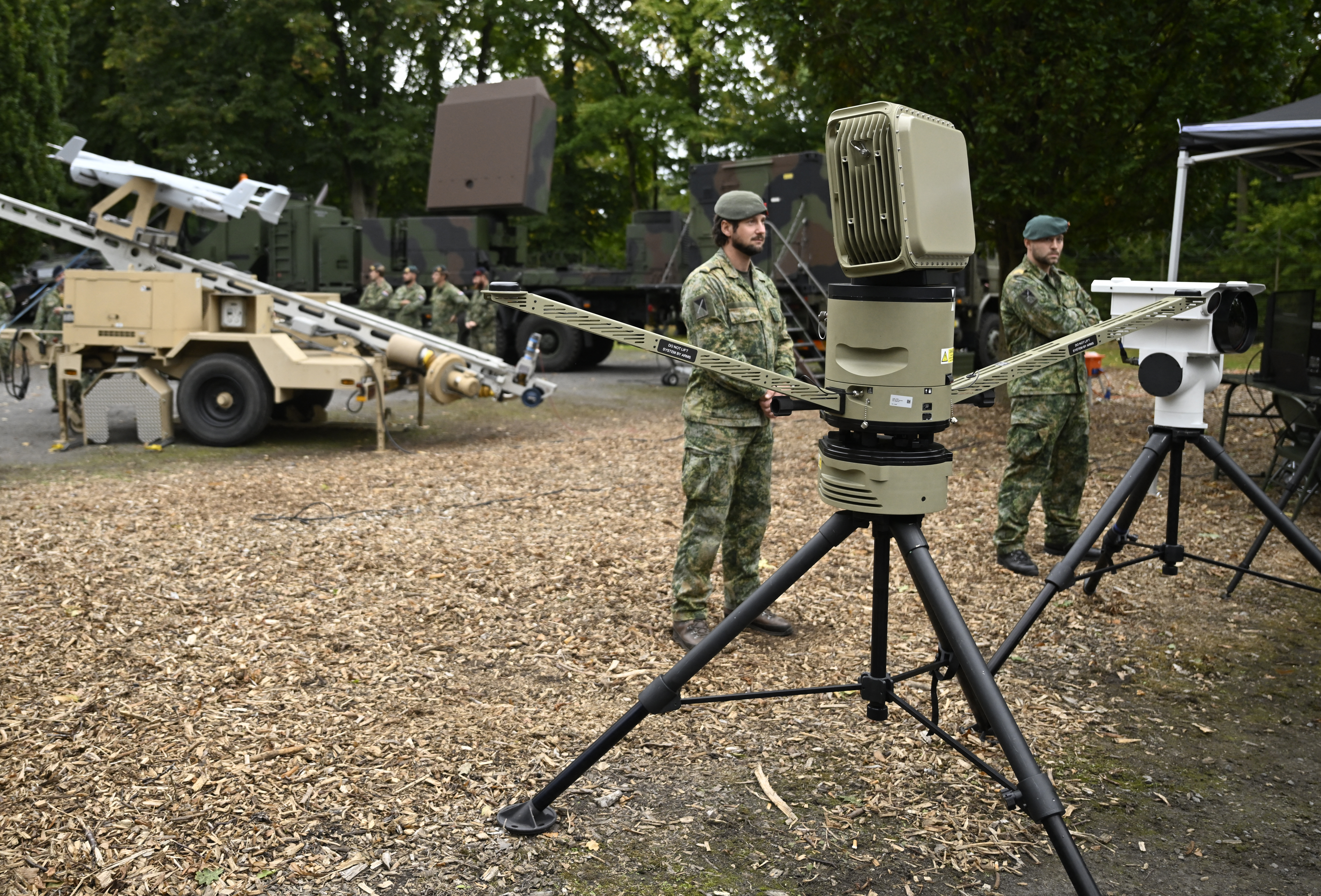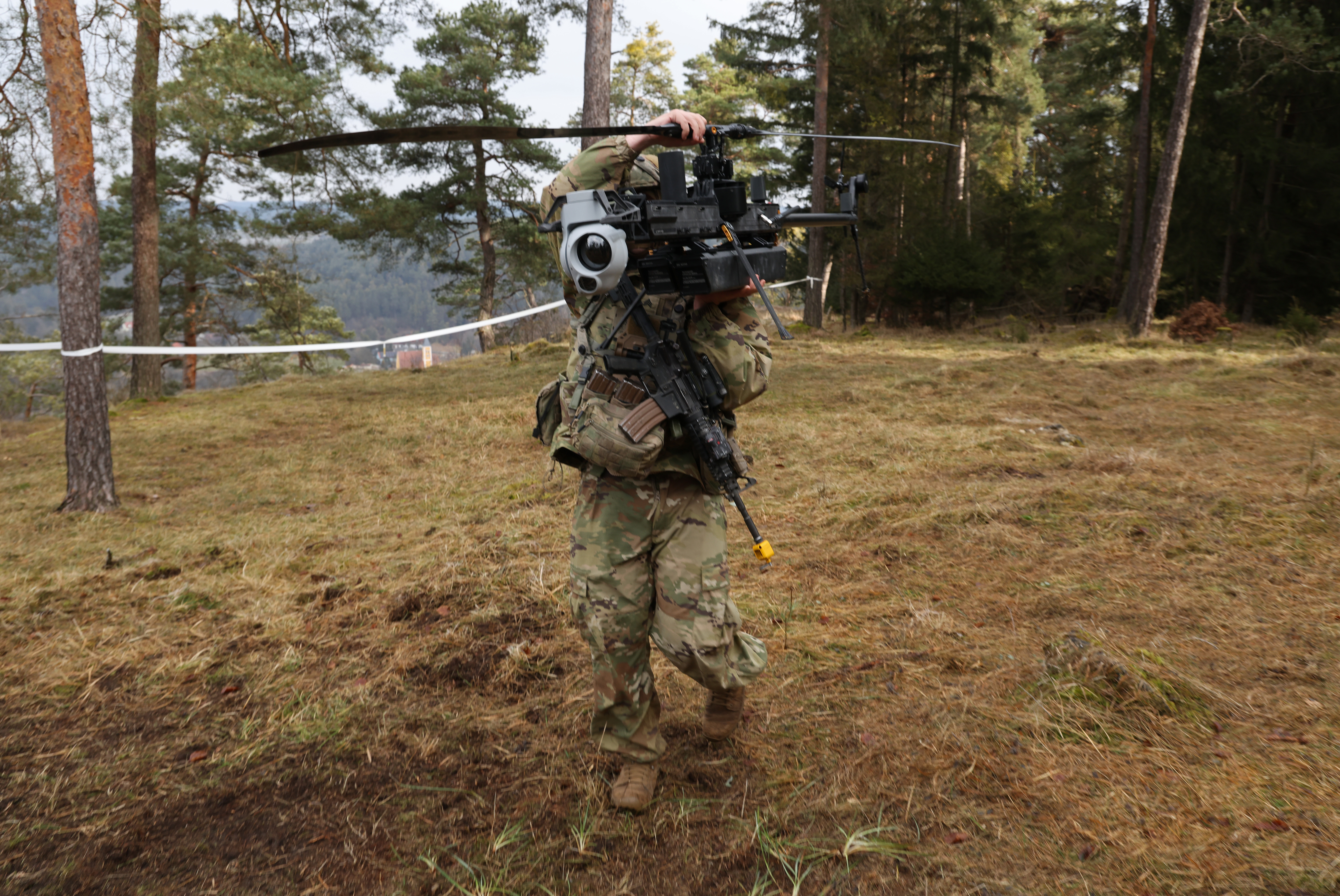
The Air Force has launched a new unit dedicated to figuring out how to use wingman drones in tandem with manned aircraft over future battlefields.
It’s an upgrade for the Experimental Operations Unit, which has operated as a detachment of the 53rd Wing since 2023. On June 5, the wing formally elevated the unit to sit on par with other operational squadrons at a ceremony at Nellis Air Force Base, Nev.
“This is a pivotal moment for our force,” 53rd Wing Commander Col. Daniel Lehoski said in a press release. “The EOU embodies our commitment to rapid innovation and ensuring our warfighters have the most advanced tools to dominate the future battlespace.”
The Collaborative Combat Aircraft program aims to provide the Air Force with “affordable mass,” dramatically expanding the number of aircraft and missiles the combat fleet can put in the air without risking additional lives.
Pilots aboard F-35, F-22, and the upcoming F-47 fighters could manage a handful of CCAs equipped with electronic-warfare tools to disrupt air defenses, for example, allowing the manned jets behind them to slip into enemy territory. In that spirit, the motto scrawled across the bottom of the EOU’s unit emblem is “Kill More, Die Less.”

The drones are among the Air Force’s top acquisition priorities and underscore the growing role of autonomy in combat. Still, Maj. Gen. Joseph D. Kunkel, the Air Force’s force design director, said in January that the service will keep the jets’ level of autonomy relatively simple to build them faster.
“What we thought was going to be this requirement for a great amount of autonomy and a significant amount of artificial intelligence, and really, really complex algorithms,” he said, has turned out to be instead “frankly, simple autonomy, simple algorithms, a little bit of AI sprinkled in.”
“We’ve been able to decrease pilot workload to a degree where they can really, really effectively utilize these capabilities,” he said.
Last month, the Air Force announced that two CCA prototypes had begun ground testing ahead of a first flight planned this summer. The two CCAs are the General Atomics Aeronautical Systems YFQ-42A and Anduril Industries’ YFQ-44A—the first unmanned aircraft in the Air Force inventory to receive a fighter designation. Production of as many as 200 of the autonomous aircraft is supposed to be underway by 2028; CCAs are slated to join the fighter fleet by the end of the decade.
The Air Force is still developing its concept of operations for CCAs, which is where the Nellis unit comes in. According to the release, the unit will test and refine human-machine teaming for CCAs in realistic scenarios.
“We are here to accelerate the delivery of combat-ready capabilities to the warfighter,” EOU commander Lt. Col. Matthew Jensen said in the release. “Our experimental operations will ensure that CCA are immediately viable as a credible combat capability that increases joint force survivability and lethality.”
Nellis is well-equipped to handle that mission: The base is home to a major training range as well as hosts a branch of the Joint Integrated Test and Training Center, where joint and coalition partners can simulate future air battles. The unit expects to fly real-world experiments to verify simulated results and further refine its tactics.
The post ‘Kill More, Die Less’: New Unit Explores How to Deploy Wingman Drones appeared first on Air & Space Forces Magazine.

Air, 53rd Wing, autonomy, CCA, Collaborative Combat Aircraft, drones, Experimental Operations Unit, Nellis Air Force Base
Air & Space Forces Magazine
[crypto-donation-box type=”tabular” show-coin=”all”]






